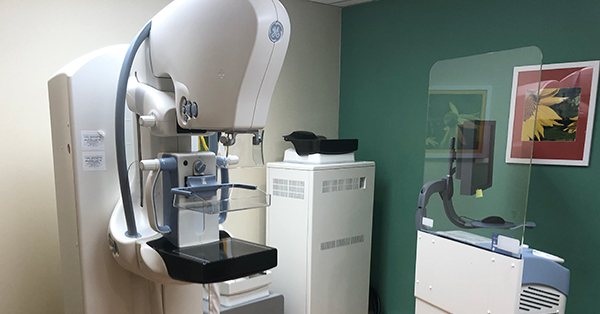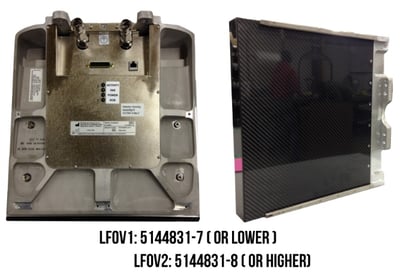
Updated: April 30, 2025 : 2 min read
GE Senographe Essential Digital Detectors: Lifespan and Cost Info
In most regards, the detector is one of the most important components on a digital mammography system. Not only is this true in terms of functionality and image quality, but also in terms of replacement cost.
If you own a GE Senographe Essential digital mammo, or are considering purchasing one, it will be helpful for you to know more details about this very special component. Keep reading to see vital detector details like part number, replacement cost, and average lifespan, as well as how to make sure you get the correct detector version when the time eventually comes for your replacement.
The Cost
There are two types of detectors for the GE Essential: The LFOV1 and LFOV2 (large field of view). These detectors are similar in size and appearance, but they are different, so their part numbers are the best way to tell which one you have/need. Have your part number on hand before you start making calls to order a replacement. This will help to narrow your search and minimize downtime.
 LFOV1: P/N 5144831-7 (or lower)
LFOV1: P/N 5144831-7 (or lower)
OEM list for new- $393,946 outright, no exchange available
Used- $25,000 - $75,000, depending on unit age
LFOV2: P/N 5144831-8 (or higher)
OEM List for NEW- $147,000 on exchange, or $220,500 for outright purchase
Used- $25,000 - $75,000 depending on unit age
The Lifespan
Based on the experiences of our field service service engineers and of the facilities they serve, we've learned that, at a moderate-volume facility, a digital detector lasts (give or take) about 5 years.
The Difference
It should be noted that, among GE digital mammos, the LFOV detector is specific to the Essential. Previous models in the GE line, such as the 2000D and the Senographe DS, use SFOV (small field of view) detectors. Both LFOV1 and LFOV2 have a greater field of view than these earlier detectors. The major difference to note between the Essential detectors is that the LFOV1 is 19x23 cm versus the LFOV2, which is 24x31 cm. In spite of this size variance, LFOV1 and LFOV2 detectors are largely comparable when it comes to installation and general use. It is advised that you never downgrade back to the LFOV1 if you currently have an LFOV2.
Buying Your Replacement
When you contact your provider for a replacement, in addition to having the part number for your detector, make sure you also know your mammo system's configuration type. It will be either a SB150 ADS computer, a U20 ADS computer, or a Z400 ADS computer. This will be displayed onscreen during your Essential's boot-up sequence. These details will let your provider know which detector type you need.
There is a strong chance that, regardless of which detector type you have currently, an LFOV2 replacement will work for you. This is preferable, as they are not only larger to help you gain more information from scanning, but also more common and in most cases less expensive. Note, however, that if you operate in Germany, Iberia, or France (GIF countries) and you wish to purchase an LFOV2, you will have to get it from a third-party supplier. GE will only sell LFOV1 detectors into GIF countries.
Whether you need a detector today or are looking for future replacement, our parts website is an easy way to browse and order from our inventory of GE mammo parts. You can also use the button below to send us your details and get a pricing quote.

Vikki Dipple
Vikki Dipple is a Customer Service Representative with the Block Imaging Parts team. Quality parts and a prompt response are her goals for every customer call. When she’s not helping customers get their equipment back in action, you’ll find Vikki reading, gaming, or playing outside with her sons.





